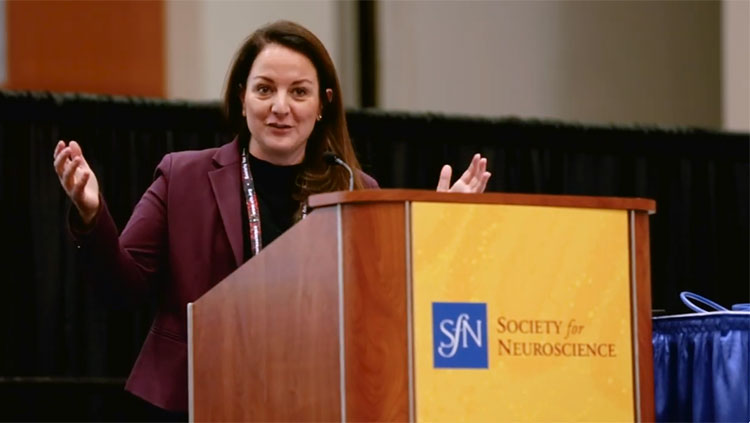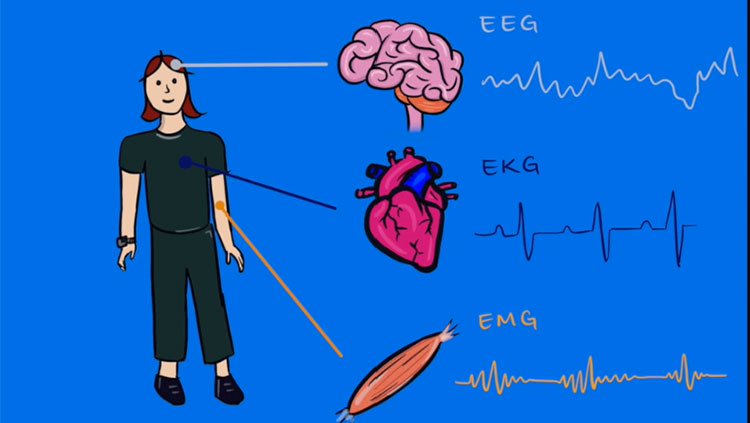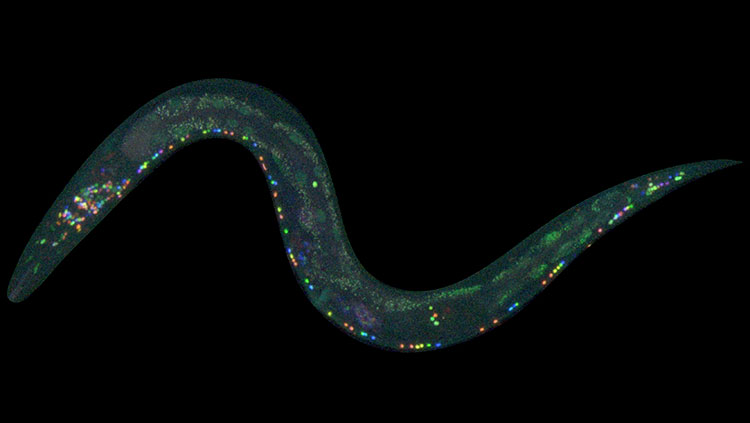As we turn the page on 2014, here’s a list of some of the year’s highlights in neuroscience - along with a heavy dose of speculation about what they might mean for the future of the brain. It seems, like Christmas decorations for sale during Halloween, that “end of year best” stories come to us earlier each year. Yet, I’ve read of only a few brain-related breakthroughs in many of the year-end science lists. I don’t like to use the word “breakthrough” very much, in part because it’s such an overused PR word. To me, true breakthroughs should be more than just incremental findings – they ought to denote either a novel understanding of a previously unknown fact (for example, the structure of DNA), or that we’ve overcome a fundamental conceptual or technical obstacle to a deeper understanding of phenomena that helps break up an idea log jam.

This year there were several stories and research areas that brush up against my definition of “breakthrough” (and some might be more fairly called "advances"). It’s important to note that many of these stand a bit outside of neuroscience - neuroscience, after all, is an eclectic endeavor that continually renews itself by borrowing good ideas from related disciplines. Here then are a few prominent stories from 2014:
1) Your Brain implant is (almost) ready. This was an impressive year for technologies that allow us to reach into the brain from the outside by listening in on - and communicating directly with - brain circuits. Brain-computer interfaces (BCI)s received a huge PR boost when 29 year old Juliano Pinto became the first paraplegic to kick off the FIFA world cup using a BCI-controlled exoskeleton. While the technologies leading to this moment have been around for a while, and this doesn’t quite meet the standard of a “breakthrough”, bringing together the various technical elements made it nevertheless feel like a watershed event. Add to this some other recent successes: a study used epidural stimulation to produce significant recovery of control of paralyzed muscles in several patients; and another showed improved control of experimental prosthetics using a BCI. Some interesting re-imagining of your grandpa’s BCI also happened this year. First, research groups have successfully integrated a sense of touch in a prosthetic limb by integrating pressure sensors with stimulating electrodes embedded in remnant median and ulnar nerves. This sort of real time feedback is an essential step to provide enhanced control and integration with the body image of the user, in essence making the prosthetic seem as though it belongs to the user. Suddenly it feels like translation of these technologies into society is maturing.
Last year I made sport of a missed prediction in 2013 by psychic LaMont Hamilton of a “brain to brain telepathic device”. Well perhaps Mr. Hamilton was picking up vibes from 2014 – this year, a “telepathy” device of sorts composed in part of an EEG cap and transcranial magnetic stimulator allowed one person to affect the actions of another over the internet simply by thinking it (supplanting the less effective current state-of-the-art snarky comments). This is a far cry from transmitting complex thoughts to one another, but was an interesting demonstration piece using current technologies. And lest you think decoding the brain has applications limited to controlling devices or sharing thoughts through computers like Professor X, one study that surely has the next Bond villain squealing with delight is the recent demonstration of controlled gene expression using thoughts. Using an EEG-controlled process in combination with near-infrared optogenetic activation of bacterial diguanylate cyclase (DGCL), investigators were able to increase cyclic diguanosine monophosphate (c-di-GMP) and induce triggered stimulator of interferon genes (STING)-dependent induction of synthetic interferon-β promoters (basically, they turned on a thing, that turned on another thing that made another thing) – all leading to production of secreted alkaline E phosphatase in cultured cells. Another proof-in-concept experiment, to be sure, but imagine a feedback loop where your own thoughts could greatly amplify production of genes for something like learning a new task.
2) Reprogramming human cells. We started 2014 with the depressing story from Japan of what might have been one of the top findings of the year, but wasn’t. In January a group from RIKEN reported an easy way to reprogram adult stem cells called Stimulus-Triggered Acquisition of Pluripotency (STAP). But it turns out that hard things are actually pretty hard, and several falsifications in the original report led to the retraction of the study by the journal Nature. After several failed attempts at replication Haruko Obokata, the lead author, resigned in December. Tragically, senior researcher Yoshiki Sasai, who was involved in the study (criticized for his supervision of Obokata but apparently absolved of direct involvement in the more troublesome apparent fabrications of the study) committed suicide. The reverberations of this misconduct have created a flurry of concerns about the quality of peer review at prestige journals, data management and research oversight that raise it to the pantheon of famous misconduct cases that we’ll be discussing in our biomedical ethics classes for many years.
Let’s relegate this to “Auld Lang Sine” and turn the page on this unfortunate tale for now. Fortunately, there were other stem cell advances in 2014 that may impact neuroscience, including the first demonstration of cloned human embryos from adult humans using somatic cell nuclear transfer (similar to the process used to make Dolly the sheep), and just making it under the wire for 2014 was a demonstration of egg and sperm cells that were made from adult human skin cells. So in principle we could be at the threshold of something like the plot from The Boys from Brazil – but thankfully I’ve yet to encounter anyone who would want to go that far. Instead, the utility of these approaches are being touted for the study and treatment of infertility and human disease - infinitely better than cloning Hitler.
3) Optogenetics flips a switch on memory. Optogenetics enjoyed some additional advances in 2014, but I’ll focus on just a few from the dozens of publications this year that caught my interest. Optogenetics was used to bolster an operational hypothesis of how we remember and forget. Long-term potentiation (LTP) is a cellular phenomena often studied in the hippocampus (but present in many brain circuits) that is thought to be the embodiment of Hebb’s rule that basically holds that cells that “fire together, wire together”. Long-term Depression (LTD) is a process of activity-controlled synaptic weakening that occurs at many of the same synapses. Nabavi and colleagues conditioned rats to associate a foot shock with optogenetic stimulation of inputs to the amygdala, producing a type of fear conditioning. They first inactivated the memory of the shock with stimulations that produced LTD, then used LTP conditioning to the same inputs to reactivate the memory. This was significant because it essentially broke down the wall between the sorts of experiments done in reduced brain preparations showing long term synaptic strengthening, and allowed it to be connected to actual learning. Such fear conditioning promises to be an important window into conditions like post-traumatic stress disorder (PTSD), which involves many of the same brain regions. Tonegawa’s group also published an important study showing that the emotional importance of memories could be modulated optogenetically. In addition to activating or silencing neurons by pumping light into the brain, this year also brought an innovation in detecting brain activity by essentially running light-sensitive opsins in reverse. Archaerhodopsin-3 (Arch) was previously shown to be a fast and sensitive voltage indicator. Important for composing a system of simultaneous stimulation and detection, the spectrum of Arch is also shifted away from channelrhodopsin (channelrhodopsin, or ChR, stimulates neurons in response to light).
In the study by Hochbaum and colleagues published in Nature Methods, a new version of Arch was engineered called QuasAr (“Quality superior to Arch”) that was fast and efficient enough to allow simultaneous stimulation and visualization of activity without the time consuming and destructive process of patch clamping the cells. This sets the stage for a less-invasive optical stimulation and recording system that - along with some refinements that would permit listening in on ionic currents and individual ion channels - could be very useful for drug discovery. Finally, using an optogenetic construct that specifically targeted cholinergic neurons, a team of researchers demonstrated the ability to induce REM sleep in response to selective optogenetic activation of neurons in the brainstem that contain acetylcholine. Those of you who have studied basic neuroscience know that it’s well understood that cholinergic cell groups in the brainstem generate transitions from slow wave sleep to waking and from slow wave sleep to rapid eye movement (REM) sleep. However by selectively targeting the cholinergic neurons this experiment eliminated a problem with fibers from other brainstem neurotransmitters (for example norepinephrine and dopamine) that may be passing close by that might have been stimulated in studies using conventional electrical stimulation methods.
4)A crisp update on CRISPR. Last year I mentioned CRISPR/Cas9 as one of the year’s major technologies to watch. Advances this year continue to point to major applications to basic research as well as holding tremendous potential applications in the treatment of brain diseases. CRISPR/Cas is a method allowing editing of large portions of a genome. Instead of knocking in or out one gene, which is now the norm, the CRISPR/Cas system allows multiple genes to be controlled simultaneously. This is significant because neurological disorders with genetic causes often involve disruption of more than a single gene. CRISPR-Cas may therefore be doubly useful – providing the tools to create new animal models (for a peek into this potential, see a report of transgenic monkeys published this year) with multiple gene disruptions that can be a better surrogate for human disorders in drug studies; and it may offer the possibility of treatments that could edit out, normalize or suppress disease genes.
By mining large biological data sets using the tools of bioinformatics, and using this knowledge to inform which genes to alter, the future could be bright for this method. As a preview of the potential future, this year CRISPR-Cas was used to switch on multiple genes, and additional tools were developed to target the human genome. It’s been used to correct mutations in genes implicated in beta-thalassemia (a genetic blood disorder) in induced pluripotent stems cells derived from patients, and in living mice to correct the genetic defect and phenotype of the liver disease hereditary tyrosinemia type 1. In nervous tissues, it’s even been used to edit out synaptic proteins. At the risk of overhyping this technology, imagine a future with an integrative biology approach for neurological diseases where treatments are personalized by reading a patient’s genetic code, then correcting or deleting the disease genes (or - careful! - even genes unrelated to disease) – while there’s a lot to be done to increase the delivery and efficiency of the system, for the first time this rather futuristic scenario seems plausible. Look for the number of studies using this system in the brain and nervous system to ramp up in the coming year.
5) True Blood, and Turning back the brain clock. Could vampires have it right? This year held a number of findings regarding the age-old quest to be ageless, but perhaps none were as interesting (and a little creepy) as findings related to parbiosis, a joining together of the vascular systems of younger and older animals that has beneficial effects on the elder. This year, it was demonstrated that one of the factors found in young blood, GDF11, was itself capable of remodeling and restoring the brain’s blood vessels, as well as improving skeletal muscle function. This is significant because the brain is a jealous user of blood oxygen, and compromised vascular systems are tied to cognitive decline – finding a drug to slow or stop this (and not inadvertently feeding pathological processes like brain tumors) could be at least one key to extending our cognitive function. Rapamycin and derivative drugs may also be part of a multidrug strategy to extend cognitive lifespan. These drugs act in part by inhibiting a pathway, mTor, which is involved in the regulation of cell cycle. This year a study has shown that intervention in this pathway was able to significantly improve immune function in the elderly. The main problem with developing drugs for this pathway is that it also supports things like learning and memory, so designing drugs that promote the beneficial effects without accidentally triggering negative ones will be important.
Out in the ocean, a recent genetic analysis of bowhead whales isolated candidate genes implicated in altered insulin signaling and adaptation to a lipid-rich diet that may contribute to their advanced lifespan. Caloric restriction has also been shown to extend lifespan in multiple animal studies, so identification of a cellular pathway for this phenomenon is incredibly useful – this year a possible identification of a common pathway in caloric restriction for the production of hydrogen sulfide was a significant step. And good old Ibuprophen is also suddenly of interest as a longevity drug, after a study demonstrated this year that the drug regulates tryptophan metabolism and survival in yeast – once again, pointing to the key importance of basic research into cell and molecular mechanisms.
In other basic-to-translational research advances, this year a novel 3D model of human Alzheimer’s was reported that possessed two hallmarks of the disease: amyloid-β plaques and neurofibrillary tangles. The significance of this is increased because the model was derived from human cells, making this a nifty test system for advancing new drug candidates that may have a greater chance for success. Finally, a late breaking finding that may have great significance is the demonstration that memories in aplysia may persist somewhat independently of stable synapses. However, as pointed out by Neuroskeptic (I recommend the post and comments) the maintenance of synapse number is only one component of memory formation. It’s a very cool finding that is the target of significant neurohype in the popular press.
6)Other findings and stories of note, in brief:Letters of Note. I’m personally not a great fan of group letters having to do with scientific controversies – I tend to view them as a subset of argumentum pro hominem except where they represent a consensus based on specific scientific findings. With this caveat I offer two letters that were in the news this year that may have long term impact on the field:
Brain game claims. This year, a consensus statement by over 70 scientists on the dubious value of brain training was met by a counter statement from other scientists that it may confer certain benefits. The real value of this exchange is attention to the issue given the commercial success of brain training games and an aging population interested in extending cognitive health for as long as possible. Improved study designs should be able to speak directly to potential benefits of brain training without overly hyping them.
Human Brain Project pushback. Another letter aired concerns over the billion dollar European Human Brain Project, including concerns about management of the project and the concentration of enormous resources that might impact the diversity of methods that have been proven to be necessary to advance our understanding of the brain. Proponents argued that technology development was always a primary objective of the project.
Do-it-yourself brain stimulation. This year technology that gives new meaning to “catching a buzz” was widely written about. While not strictly a breakthrough – more of a surge in interest, DIY brain stimulation was in the news this year as several companies have sought to market devices to enable consumers to experiment with the technology, at the same time that a published retrospective report did not find reliable physiological effects. Double-blinded placebo controlled studies and solid hypothesis testing will be required to tell whether the claims surrounding this technology match the hype. How do I feel about it? Well, I haven’t strapped one on my head yet.
Pay to play. The National Football League (NFL) settlement was an important story this year – mainly because in conjunction with the numerous tragic stories from former players it began to illustrate the real costs of contact sports. That the NFL is beginning to bear some of these financial burdens may lead to greater attention to improvements in safety and the rules of the game, and may also lead to greater focus on youth league football.
Medical Marijuana. Legalization of marijuana in several states and the District of Columbia was a big change this year that will introduce additional complexities as societal use of the drug becomes more prevalent, and additional medical uses are studied.
ALS gets buckets of money and a stronger link to genetics. The ALS foundation had one of its best years ever, with over $115 million raised through the very successful ice bucket challenge. Whether this will produce a lasting benefit to fundraising remains to be seen. Scientific highlights included a study reporting an analysis of variants in 17 known ALS genes from 391 ALS patients that identified pathogenic gene variants in over 25% sporadic and 64% of familial cases, showing a greater contribution of genetics than previous methods have detected.
Autism genes and gene clusters. CHD8 (chromosomal domain helicase DNA binding protein 8) is a DNA helicase that represses certain genes by remodeling chromatin structure. It negatively regulates Wnt signaling, which is critical for normal vertebrate brain development. In a study published this year scientists found a high incidence of CHD8 mutations in certain types of autism, and by disrupting the gene in zebrafish they produced several suggestive developmental disruptions. Relatively minor alterations in this fundamental gene produce an array of downstream effects. In another notable study, an integrated biological systems approach identified a novel cluster of autism-associated genes related to synaptic transmission.
Paralysis analysis. In an interesting case, support cells extracted from the nose of patient Darek Fidyka were used to provide a pathway for spinal regrowth and functional gains. And on the molecular front, a study in Nature reported that modulation of a proteoglycan receptor produced marked recovery in injured rat spinal cords.
Dark passenger. And finally, I leave you with 2014’s top award for the wall of weird - a case that reminded me of a story from Rod Serling’s classic series, “Night Gallery”, about a man who literally had an earwig bore through his brain. After puzzling over the cause of a man’s headaches, doctors in England used brain images to find what turned out to be a tapeworm in his brain. The 1cm tapeworm had bored 5cm from one hemisphere to the other before it was surgically removed. Yes, I know – technically for you and me it’s not a breakthrough. But I’m sure it was a breakthrough for the poor fellow who parted with his unwelcomed visitor! I'll be watching this list in the coming year to see how many of these stories and reports turn out to be truly transformative.
If I've left anything out that you thought should be included from the past year, or if there’s something you're looking forward to seeing in the coming year, feel free to leave a comment here or on Twitter. Happy New Year!



















